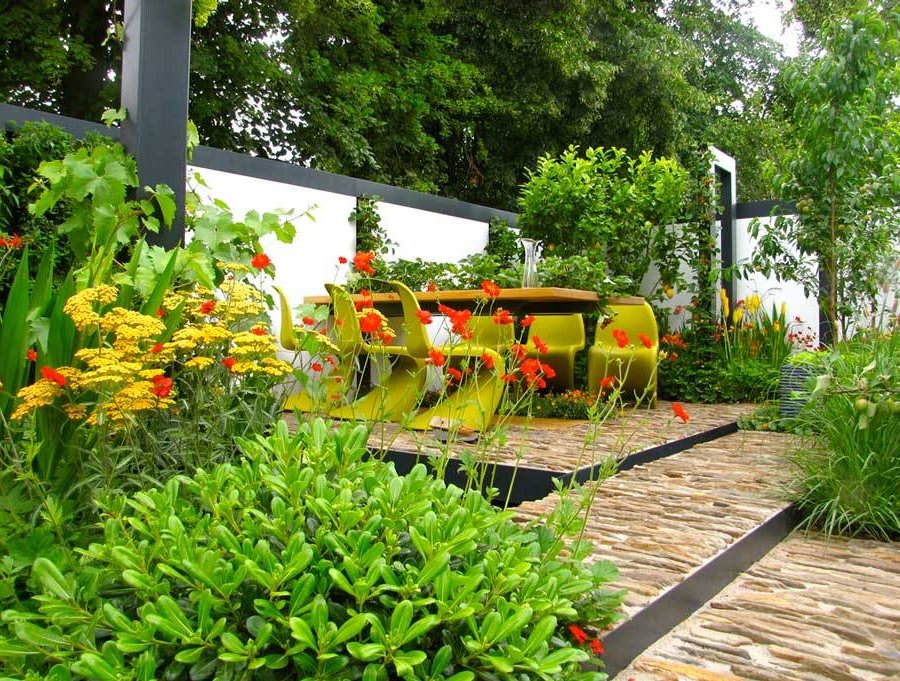Tips for making your artificial flowers and plants look natural
Throughout our professional career, we have come across more than one reason to decorate with artificial flowers and plants.
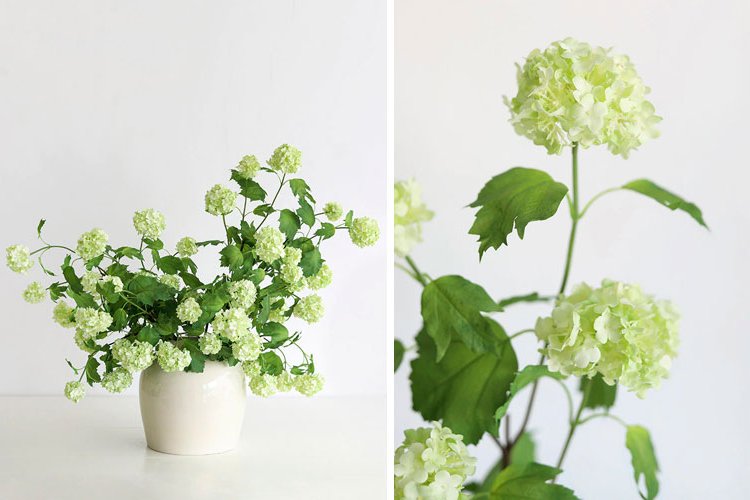
And yes, at the beginning it also seemed to us to be an unfeasible idea because it is precisely an artificial look.
But the truth is that, over the years, it has become easier and easier to find plants that look like the real thing. So much so that we have even had to go up close and touch or bend the leaves to make sure that they were not natural.
At the fairs we visit, we see suppliers have better and better products, both in floral arrangements and plants of all sizes, even small trees such as olive trees or laurel trees.
We also see it in restaurants (of those that are proliferating with such a striking and appealing decoration), where there are real jungles in the darkest corners and they are always, always, green and leafy.
There we also ended up paying more attention to the plants than to the food. And, of course, we played and left with a smile for the "natural" finish they have achieved.
But the truth is that in an environment where relaxation and good spirits are assured, it is easier to "sneak in", because we are predisposed to have a good time and we perceive the whole decoration as a very pleasant environment. It does not even cross our minds that there may be some artificial element.
But what happens when we want to do the same in our own home? It is not so easy to make the vegetation go unnoticed.
So in this post we are going to give you some tricks that will help you in this task, so that your artificial flowers and plants look natural.
How to make a plant go through authentic?
Decorate the pot
Generally, artificial plants will be sold with a smaller pot than the total volume of the plant would seem to require.
Since it is not natural, it does not need more than what it comes with, since it does not have roots that need a good pot with soil to expand and grow.
The first thing that comes to mind is to put a larger pot or basket so that, from a distance, it looks good. However, as soon as we get closer we will see that there is more than enough space everywhere, and that the basket, if it is soft, tends to fall down since it has no body or content to hold it.
For these cases we have to play with trompe l'oeil. That is to say, to use other elements that help us to make our plant look natural.
The first thing to do is to raise the plant a little. To do this you can use an inverted pot inside the basket or decorative pot. Then fill the hole with paper until it almost reaches the edge of the basket or decorative pot.
Next, you have to cover the pot of the artificial plant and for this you can choose from several options: pebbles that cover everything until you can see only the trunk, moss or even soil.
In the following images you can see a clear example of the work done by Katrina Chambers and Casey from The DIY Playbook. Don't tell me it didn't look great.




Uses plants that fall
If you are still not convinced by the result, because the leaves of large plants make you wary, try smaller-leaved and drooping plants.
They tend to be more flexible and their movement may seem more credible to you.
In addition, these types of artificial plants can be used with hanging planters, thus, by having them higher, they are slightly removed from the foreground.
And if they are surrounded by other objects, such as the shelf in the image, their finishing material will go more unnoticed and will end up convincing you.

Use plants with leaves of various shades
It is about imitating nature, and nature is not perfect. Plants with different shades of green, with speckles and stripes also contribute to achieve the much sought-after naturalness.


How to make flowers look natural?
Combines different flowers
As in the first case of plants, with flowers you can also create varied sets by using pots that help you to pass them off as authentic.
If you opt for a large planter, you will need to raise the internal base. For this you can use some bricks and, on them, you will place floral foam to stick your artificial flowers.
The final result will depend on your imagination, color combination and skill. So all you have to do is practice and enjoy that little bit of craft time.
Rebekah from A Blissful Nest came up with this wonderful way to decorate the entrance of a home.



Play with textures and volume and add some natural branches.
For a more subtle floral centerpiece, you can opt for branches that already come in different shades.
If you also add some natural twigs with green leaves (e.g. eucalyptus or laurel leaves, which last long and dry well), they will help you minimize the artificial and the eye will tend to interpret that the whole set is natural.
Don't be shy about adding, the leafier it looks, the better.
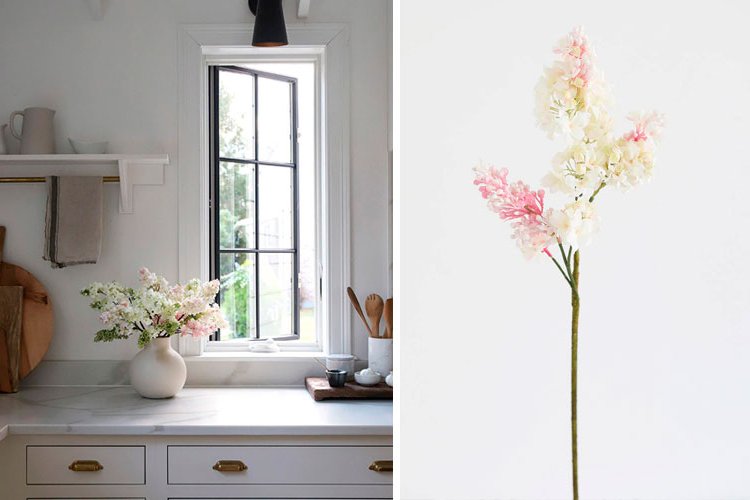
You can also choose branches with different flower sizes. If you look for a good supplier you will find different types of branches of the same variety.

Play with tones, mix different flowers and you will get volume and texture. This way it will look like a real bouquet of natural flowers.
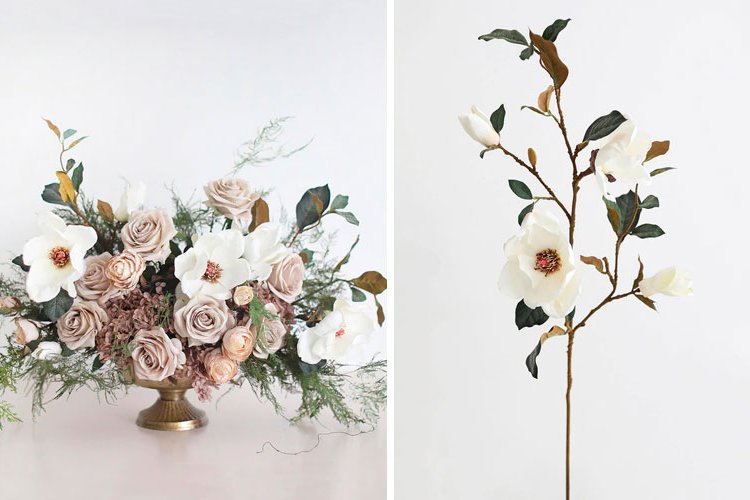
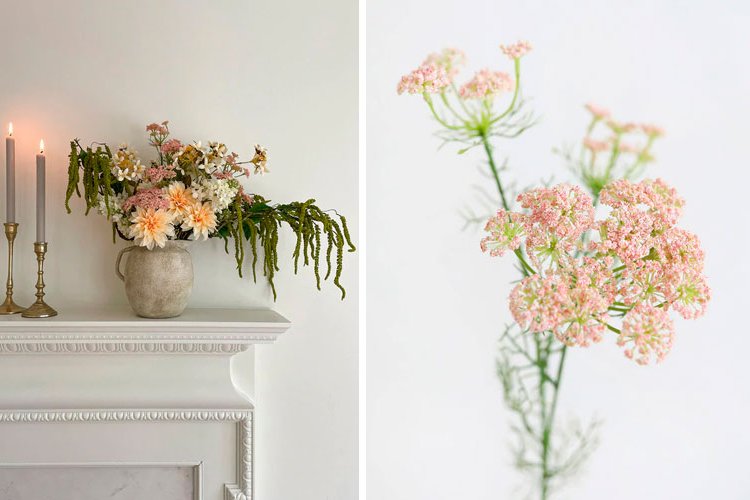
A glass vase with water
Who would think that a vase with water would not have natural vegetation? A simple, inexpensive trick that achieves the objective we are looking for.
That said, it only works with a transparent vase, it's all about the water showing through.
Automatically, whoever sees it, will erase from his mind any possible doubt about the authenticity of the flowers or branches (here we play with the psychological side of human perception).
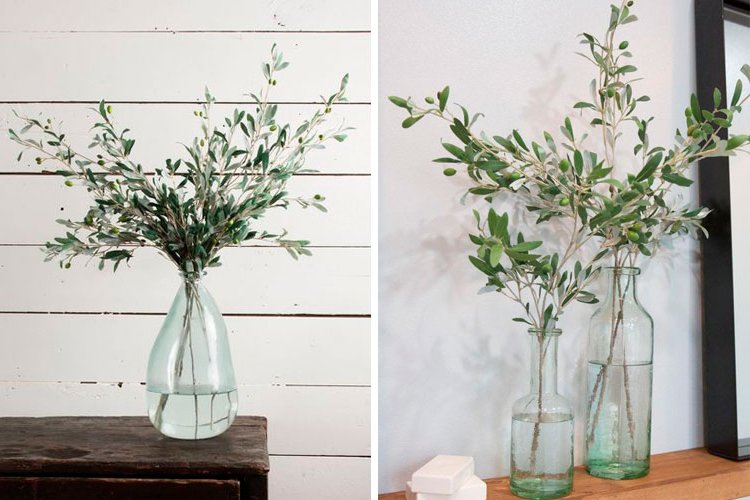
You can also play with smell.
Spray your bouquets of artificial flowers with spray scents. This is a subtle trick, but very successful. There are many of us who usually come close to smell the flowers, so with our scent we will be able to throw off more than one 😉.
And if you want more inspiration about floral decoration, you can take a look at our post about ideas for decorating with flowers where we talked about it at length. Some tricks that you can adapt perfectly to your artificial bouquets.
So far the tricks to make your artificial flowers and plants look natural. We hope they have helped you and do not discard them for your decoration.



